Michael Roberts, 6 March 2010
One’s academic trajectories and journeys are invariably subject to vagaries and contingencies. The events and researches leading to my interest in “communal violence” and “zealotry” in the 1990s, and thereafter to what I have called ‘sacrificial devotion” (embracing the topics of “terrorism,” suicide bombers and Tamil Tigers),[i] were shaped by such contingencies. Since my web site will present some short essays on both these topics in the course of this month, let me detail some moments during my research work that resulted in the journeys that produced such outcomes.
In 1986-87 I spent about 14 months in Sri Lanka on research work during my sabbatical year. I was completing my research and writing on the history of Colombo in British times and the associated rise of a Westernized middle class-cum-bourgeoisie – work that resulted in the book People Inbetween (Sarvodaya, 1989).[ii] The island was still under the clouds cast by the attacks on Tamils in the southern parts of the island in July 1983. Following the British colonial lexicon this momentous and tragic set of events was generally described as the “1983 riots.” But such politically-aware scholars as Newton Gunasinghe and Shelton Kodikara were among those who depicted the event as a “pogrom.” This was a sensitizing revision that I accepted.

Riots May 1958 - A Tamil passenger was taken out of the vehicle and beaten up
The lesson crystallised when a chance event, one of those “contingencies” that I spoke of in my opening sentence, cut into the lines of research that had dominated my focus in the 1980s. Neelan Tiruchelvam buttonholed me and asked me to provide a broad overview on the event known as the “1915 riots” (marakkala kolahalaya in Sinhala) for a conference that was being organised in the Maldives by the International Centre of Ethnic Studies, a gathering that encompassed South Asia writ large and included several scholars from the subcontinent.
Apart from the attractions of the enterprise, the Maldives as place of meeting made the offer irresistible to a beachcomber such as me. As matters turned out, the event was held in Kathmandu in February 1987, but that location was no less attractive. In effect my research direction took a U-turn in the sense that my existing field of research now had an additional field alongside it.
This terrain of research was not entirely new. Neelan approached me because he was aware of my earlier article on the “1915 riots,” one that was initially a Ceylon Studies Seminar paper at Peradeniya in 1972 and then appeared in print after revision in 1981.[iii] Both versions were moulded by an approach directed by the British empiricist tradition of historical research, albeit leavened by some sociological threads.
When I took up this particular baton once again, however, both my reflections and my subsequent explorations of additional bodies of source material were leavened by my experiences in teaching and reading social anthropology. One of my presentations at Kathmandu was a summary overview of the 1915 pogrom directed at the Sri Lankan Mohammedans (as the Muslims were called then), with some reflections thereon. This presentation was point-form and never re-written as such. But I also presented a written draft of another paper that eventually saw print under the title “Noise as Cultural Struggle” in a book edited by Veena Das which assembled some of the papers presented at Kathmandu (Mirrors of Violence, Delhi, Oxford University Press, 1990).
With People Inbetween bedded as a book, from 1989/90 my research work was now directed towards a study of communal violence as well as nationalism in the modern world. My intent was to produce a book on the anti-Moor pogrom of 1915, a work that would run alongside research on another book on Sinhalese nationalism in the British period. The latter field was informed by the literature on South Asia, notably “subaltern studies.” It was also directed by my questioning of some lines of argument within this literature that were influenced by Edward Said’s “Orientalism.”[iv]
These lines of interest were not without the impact, emotional and otherwise, of the July 1983 pogrom. During my long sojourn in Lanka in 1986/87 and other visits I had gathered anecdotal data on the 1983 pogrom that deepened my reflective thoughts, and indeed, my anger about that cluster of events.[v] This material, moreover, had led me to conjecture that in their minds the stirrers and assailants behind the atrocities in 1983 as well as 1915 were moved by a sense of ‘legitimate’ vengeance so that their awful actions were deemed righteous. They were teaching the Moors (1915) and the Tamils (1983) a lesson.
I did not, however, wish to be submerged by the local particularities of empirical detail and my local particularity as a Sri Lankan. Comparative studies of ethnic violence in Europe, USA and India seemed advisable in order to preclude tunnel-vision. Short six-month sojourns at the University of Virginia in 1991, Delhi (1995) and Leiden (1996) rendered feasible by Fellowships secured as well as Australian research grants enabled me to broaden my vision. These travels included brief visits to the library archives at the Weiner Foundation in London and YIVO, the Institute for Jewish Research in New York. The considerable bodies of data from these fields that I collected remain on the shelves — mostly unanalysed. However, these explorations provided perspectives and raised useful questions.
Furthermore, they yielded photographs, startling photographs at times. I still have in my mind’s-eye an image of Nazi men and women clambering among a mound of Jewish bodies searching for booty – a newsprint photograph of poor quality that I saw at the Weiner Foundation. My quest for photographs had been inspired by two of the shocking scenes from the atrocious mayhem at Borella Junction, Colombo, on 24/25th July 1983 that had been reproduced in the Tamil Times.

1983 Borella rioters - burning
Culled from the poor-quality reproductions in that periodical these images were reproduced in my literary essay, a personal statement of protest, entitled “The Agony and the Ecstasy of a Pogrom: Southern Lanka, July 1983” when it was reprinted in the anthology entitled Exploring Confrontation: Politics, Culture and History (Reading, Harwood Academic Publishing, 1994).
Both the limits and incisiveness of visual imagery surround the embellishments attached to these pictures. One reveals a mob of jubilant looters and assailants and indicates that ordinary people participated in the pogrom (as indeed confirmed by numerous witnesses — from Karen Roberts in her July to the research work on the July 1983 pogrom undertaken by Naren Kumarakulasingham[vi]). The other is even more shocking, but also highlights how a picture can sometimes mislead.
When I saw this picture I took it as given that (A) the naked man was a Tamil and (B) that he was subsequently killed. Both interpretations were conjectures that amounted to cultural readings, interpretations that, say, a Canadian may not have essayed. Reading the image at face-value I also called the reproduction “Dancing the Killing.” (see Roberts, 1994d, page 324).
It was not till my article had reached the bookshelves that Charles Abeysekera gave me the name of the intrepid cameraman who took these flash pictures in extremely dangerous circumstances. This was Chandragupta Amarasinghe, who had then been attached to the Communist Party newspaper, Äththa, whose offices were a stones throw from Borella Junction. This led me to contact Amarasinghe and purchase better copies of the photographs he took that night. I also gathered empirical details from his observations as a witness of the activities that night both at the Kanatte cemetery initially and then on the streets around.[vii]

- 1983 Borella rioters – kick boxer
He confirmed both my principal conjectures. That poor Tamil man had indeed been killed. But he also modified my third assumption. The assailant was not dancing, said Chandragupta. He was swivelling around as he administered a karate kick. So I was mistaken on this detail. The critical aspect, however, was the fact that this killer, together with others around him, was certainly enjoying this horrendous work. Yes, as Chandragupta attested, both adrenaline and ecstasy were coursing thought their veins (see also a photograph from the 1958 mini-pogrom reproduced in Ivan’s Paradise in Tears, Plate 247).
These details, then, reveal a form of zealousness that is not motivated by religious fervour, but by ethnic prejudice, that is by relational subjectivities and sentiments based on ethnic differentiation (distinct in some ways from racial differentiation based on skin colour)[viii] and reaching a climax through political processes, rumour-mongering and currents of rhetoric.
It was within this background that I penned an essay, “Understanding Zealotry,” in 1995 for the Newsletter produced by my hosts at Leiden University, namely, the International Institute of Asian Studies. This essay will be inserted in this web site soon together with some other pictures illustrating the violence emanating from zealotry and extreme forms of nationalist or communalist action directed against an Enemy Other. A broader selection can also be reviewed by visiting the website https://sacrificialdevotionnetwork.wordpress.com/ and surfing down the right panel and clicking “Photos.” This site in its turn was due to an initiative from Dan Nourry[ix] after a Workshop I organised at Adelaide University in late 2005 to discuss “Sacrificial Devotion in Comparative Perspective: Tamil Tigers and Beyond.”
The projected book on the 1915 pogrom never eventuated. The reasons are two-fold: in preparing my anthology Exploring Confrontation in the years 1991-94 I distilled my work on the pogrom into two chapters. One, “The Imperialism of Silence” improved and filled out the circumstances that generated religious disputes and thus superseded my previous essay on “Noise as Cultural Struggle.” The other, “Mentalities: Ideologues, Assailants, Historians and the Pogrom against Moors in 1915,” summarised my main findings and arguments.
That done, I did not have the energy for a ball-by-ball coverage of the details clarifying the manner in which a section of the Sinhalese population terrorised most bodies of Mohammedans in their midst.[x] Besides, by 1994/95 I was fully immersed in my work on Sinhalese nationalism. By 1996 I even had several chapters in draft form.
Yet, these have never appeared in print. Twist, turn and contingency interrupted this book-venture. For one I was diverted to the work of editing a new set of articles on Collective Identities Revisited (Colombo, 1997 & 1998 under the Marga imprint). This endeavour in turn flowed into the interventionist project organised by Godfrey Gunatilleke on A History of Ethnic Conflict in Sri Lanka: Recollection, Reinterpretation and Reconciliation that involved several workshops in Sri Lanka between 1999 and 2003. Since all these ventures engaged the political processes and various currents of ideology within modern Sri Lanka, clearly, my research findings for the book remained directly pertinent to whatever I wrote under the ambit of these programmes. Indeed the draft chapters have informed all my articles within the period 1995-2009. Thus, the condensed abstracts that feature within the title “History-Making in Sri Lanka and the Sinhalese” in fact embody some of the findings destined for this unfulfilled book.
There was another reason for the delay in production, a major force in fact. While focusing on the changes arising in the period of British colonial domination, my outline for the book envisaged an initial background chapter that would condense the ideological and political circumstances preceding the advent of British control. The intention was to set up a “baseline” so that one could the better comprehend the changes emanating in the nineteenth and twentieth centuries. This meant a summary view of what we tend to refer to as the Kingdom of Kandy (though it is more proper to call it the Kingdom of Sinhalē). Well, then, as it turned out, this chapter ballooned out and became a book Sinhala Consciousness in the Kandyan Period, 1590s-1818, (Colombo: Vijitha Yapa Associates, 2004).
This expansion backwards, let me assure you, was an educational experience. One could say it was a tale involving the “re-education of Roberts.” It was a lesson in humility. I discovered that one could be wholly illiterate but nevertheless highly knowledgeable about one’s society and able to transmit this knowledge by chant, poem, story and artistic expression on stone or wall. I had previously derived some experience of the power of oral transmission, and thus of oral sources for history-writing, through my anthropological teaching and research in other societies, notably Africa.[xi] But the active engagement in material on the Kandyan period and my serial conversations with such scholars as Ananda Wakkumbura, Punchi Banda Meegaskumbura, Srinath Ganewatte, Mayadunne, KBA Edmund, Ananda Tissakumara, Sandadas & Sandagomi Coperahewa and JB Disanayake inscribed the message indelibly in my consciousness and methodology.
Sinhala Consciousness is a complex book and far from easy reading. I assert here that the second chapter on the power of oral and visual means of cultural transmission is a central foundation for its findings. It is so central that Radhika Coomaraswamy understood its import and arranged for the ICES to print a re-worked version even before the book appeared in print: see Modernist Theory. Trimming the Printed Word: The Instance of Pre-modern Sinhala Society (Colombo: International Centre for Ethnic Studies, 2002, 46 pages, ISBN: 955-580-068-7).
As this title indicates, this essay underlines my previous criticisms[xii] of Benedict Anderson’s influence in the social science thinking. It is not that his Imagined Communities is erroneous. Print-technology in the era of capitalist market forces did revolutionise modes of transmission and heightened nationalist (and other) currents of thinking. But the alacrity with which scholars embraced this argument, deepened by some post-modernist currents of scholarship immersed in textuality,[xiii] has led to the underestimation of other modes of transmission that remained forceful in the modern era. It also meant that such scholars could not grasp the fact that people who did not possess a written script possessed the capacity to develop ideas of political community that embraced large numbers and spread over a wide area. Here, I am thinking of such African peoples as the Nuer, Dinka, Ashanti and Zulu, rather than the Mons, Lao, Burmese, Khmers, Vietnamese, Thai, Bengali and Sinhalese of Asia who had the backing of a written script as well. One did not require “concrete” local networks of kinship and interaction to develop sentiments of oneness with others who were not immediate neighbours. Anderson’s “imagined” rests on far too sharp a distinction from an unelaborated theoretical category identified as “concrete.” The latter is unelaborated and rests on the flimsy example of the aristocratic classes of early modern Europe characterised by relatively small size, “fixed political bases, and the personalization of political relations implied by sexual intercourse and inheritance.”[xiv]
Imagined Communities could also be said to have misled the scholarship on Europe. Its emphasis on print technology took readers away from the sort of data and perspectives that led Adrian Hastings to contend that England and France had national identities by the later Middle Ages or the early modern period.[xv] Thus, my work on the Sinhala material, that of Hastings and the book Thant Myint U on Burma make nonsense of Hobsbawm’s assertion that there could have been no mass linguistic uniformity in countries lacking a formal system of education.[xvi]
Here, then, we see that the tracks of scholarship are beset with contingencies and sharp turns. The dribs, drabs and twists in my trajectory did flow into each other though not always in planned manner. Thus, for example, the work that went into the central chapter in People Inbetween, one that is entitled “Pejorative Phrases: The Anti-Colonial Response and Sinhala Perceptions of the Self through Images of the Burghers,” has been of critical significance for my subsequent researches on Sinhalese nationalism. For those with access to this book let me stress that one of the principal arguments in this chapter is distilled within Chart I on page 15 which is entitled “Some Twentieth Century Ethnic Pejoratives in Sinhala and Ceylonese English.”
Indeed, I stress here that this deciphering work in “Pejorative Phrases” on the underlying semantic structure of disparaging epithets in the Sinhala language – inscribed as they are by a history of migrant encounters, devastating wars and colonial subjugations in the past – has led directly to my two signature essays, “Why Thuppahi” and “The Sinhala Mind-Set.” Both may arouse distaste in some Sinhalese minds. They are meant to generate reflection and self-examination rather than anger. If anger is aroused, then, I ask readers to pause and think “Why?”
Likewise, it was during my work among historical sources in the early twentieth century, and specifically my reading of Anagarika Dharmapala’s “A Message to the Young Men of Ceylon,” that I literally stumbled upon the ideological current involving the subsuming of whole (Ceylonese) within the part (Sinhalese) in a powerful taken-for-granted manner.[xvii] This was but one ingredient that entered my analysis in “Ethnic Conflict in Sri Lanka and Sinhala Perspectives: Barriers to Accommodation.” This article was drafted in 1976 and appeared in print initially in 1978; but it was influenced strongly by the pessimism that had overtaken me from 1973/74 while at Peradeniya University about the direction which ethnic relations in Sri Lanka were moving at that point of time. It provides no pleasure for me that subsequent events justified my pessimism and went beyond my forecast in the degree of severity envisaged.
BIBLIOGRAPHY
Anderson, Benedict 1983 Imagined Communities, London Verso.
Brown, Kenneth and Michael Roberts (eds.) 1980 Using Oral Sources: Vansina and Beyond, special issue of Social Analysis, vol. 4, Sept. 1980.
Dharmapala, Anagarika 1965 Return to Righteousness, ed. by Ananda Guruge, Colombo, Govt. Press, Ministry of Cultural Affairs.
Hastings, Adrian 1997 The Construction of Nationhood, Cambridge University Press.
Hobsbawm, Eric 1990 Nations and Nationalism since 1880, Cambridge University Press.
Kemper, Steven 1991 The Presence of the Past, Ithaca, Cornell University Press.
Roberts, Karen 2001 July, London: Weidenfeld & Nicolson.
Roberts, Michael 1978 “Ethnic Conflict in Sri Lanka and Sinhalese Perspectives: Barriers to Accommodation,” Modern Asian Studies 12: 353-76 [reprinted in Exploring Confrontations, 1994: chap. 10]
Roberts, Michael 2002 “Hobgoblins, Low-Country Sinhalese Plotters or Local Elite Chauvinists?: Directions and Patterns in the 1915 Communal Riots,” Sri Lanka Journal of the Social Sciences 1981, 4: 83-126.
Roberts, Michael 1989 “The Two Faces of the Port City: Colombo in Modern Times,” in Frank Broeze (ed.), Brides of the Ocean: Port Cities of Asia, 1500 to Modern Times, Sydney, Allen and Unwin. pp. 173-87.
Roberts, Michael 1990 “Noise as Cultural Struggle: Tom-Tom Beating, the British and Communal Disturbances in Sri Lanka, 1880s-1930s,” in Veena Das (ed.), Mirrors of Violence: Communities, Riots, Survivors in South Asia, Delhi: OUP, pp. 240-85.
Roberts, Michael 1993 “Nationalism, the Past and the Present: the Case of Sri Lanka,” Ethnic and Racial Studies 16: 133-161.
Roberts, Michael 1994 Exploring Confrontation: Politics, Culture and History, Reading, Harwood Academic Publishing, 1994.
Roberts, Michael 1994b “The Imperialism of Silence under the British Raj: Arresting the Drum,” in Roberts, Exploring Confrontation: Politics, Culture and History, Reading, Harwood Academic Publishing, 1994, pp. 149-82.
Roberts, Michael 1994 c “Mentalities: Ideologues, Assailants, Historians and the Pogrom against the Moors in 1915,” in Roberts, Exploring Confrontation: Politics, Culture and History Reading, Harwood Academic Publishing, 1994, pp. 183-212 [reprinted under an altered title as chapter 5 in Roberts, Confrontations, Colombo, Vijtha Yapa, 2009].
Roberts, Michael 1994d “The Agony and the Ecstasy of a Pogrom: Southern Lanka, July 1983,” in Roberts, Exploring Confrontation: Politics, Culture and History Reading, Harwood Academic Publishing, 1994, pp. 317-30 [also reprinted in Nēthra, April-Sept. 2003, vol. 6, pp. 199-213].
Roberts, Michael 1996a “Filial Devotion and the Tiger Cult of Suicide,” Contributions to Indian Sociology 30: 245-72.
Roberts, Michael 1996b “Beyond Anderson: Reconstructing and Deconstructing Sinhala Nationalist Discourse,” Modern Asian Studies 30: 690-98.
Roberts, Michael 2001a “Sinhala-ness and Sinhala Nationalism,” in G. Gunatilleke et al (eds.): A History of Ethnic Conflict in Sri Lanka: Recollection, Reinterpretation and Reconciliation, Colombo: Marga Monograph Series, No 4.
Roberts, Michael 2001b “The Burden of History: Obstacles to Power Sharing in Sri Lanka”, Contributions to Indian Sociology, n. s., May 2001, 35: 65-96.
Roberts, Michael 2001c “Ethnicity after Edward Said: Post-Orientalist Failures in comprehending the Kandyan Period of Lankan History,” Ethnic Studies Report 19: 69-98 [reprinted in Roberts, Confrontations, 2009].
Roberts, Michael 2002 “Primordialist Strands in Contemporary Sinhala Nationalism in Sri Lanka: Urumaya as Ur,” Colombo: Marga Monograph Series on A History of Ethnic Conflict in Sri Lanka: Recollection, Reinterpretation and Reconciliation, Colombo: Marga Monograph Series, No 20.
Roberts, Michael 2004 Sinhala Consciousness in the Kandyan Period, 1590s-1818, (Colombo: Vijitha Yapa Associates, 2004).
Roberts, Michael 2005a “Tamil Tiger ‘Martyrs’: Regenerating Divine Potency?” Studies in Conflict & Terrorism 28: 493-514.
Roberts, Michael 2005b “Saivite Symbolism, Sacrifice and Tamil Tiger Rites,” Social Analysis 49: 67-93.
Roberts, Michael 2006 “Pragmatic Action & Enchanted Worlds: A Black Tiger Rite of Commemoration,” Social Analysis 50: 73-102.
Roberts, Michael 2007a “Suicide Missions as Witnessing: Expansions, Contrasts,” Studies in Conflict and Terrorism 30: 857-88.
Roberts, Michael 2007b “Blunders in Tigerland: Pape’s Muddles on ‘Suicide Bombers’ in Sri Lanka,” Online publication within series known as Heidelberg Papers in South Asian and Comparative Politics (HPSACP), ISSN: 1617-5069.
Roberts, Michael 2008 “Tamil Tigers: Sacrificial Symbolism and ‘Dead Body Politics’,” Anthropology Today June 2008, 24/3: 22-23.
Roberts, Michael, Percy Colin-Thome & Ismeth Raheem 1989 People Inbetween:The Burghers and the Middle Class in the Transformations within Sri Lanka, 1790s-1980s, Vol 1 Colombo: Sarvodaya Press, with volume 1 drafted by M. Roberts, 389 pages.
Roberts, Michael (ed.) 1997 Sri Lanka. Collective Identities Revisited. Vol 1.
Roberts, Michael (ed.) 1998 Sri Lanka. Collective Identities Revisited. Vol. 2.
Rogers, John 1994 “Post-Orientalism and the Interpretation of Pre-Modern and Modern Political
Identities: The Case of Sri Lanka,” Journal of Asian Studies 53: 10-23.
Thant Myint U 2000 The Making of Modern Burma, Cambridge University Press.
[i] See Roberts 1996a, 2005a, 2005b 2006, 2007a, 2007b, and 2008 in bibliography.
[ii] Also see Roberts, “Two Faces of the Port City,” 1989.
[iii] “Hobgoblins, Low-Country Sinhalese Plotters or Local Elite Chauvinists?: Directions and Patterns in the 1915 Communal Riots,” Sri Lanka Journal of the Social Sciences 1981, 4: 83-126.
[iv] This field is usefully summarized by John Rogers in his “Post-Orientalism and the Interpretation of Pre-modern and Modern Political Identities: The Case of Sri Lanka,” Journal of Asian Studies 1994, vol. 53: 10-23.
[v] I had picked up anecdotes re the mayhem taking place in Sri Lanka in July 1983, two from Tamil friends who witnessed events first-hand. I wrote my article on the “Agony and the Ecstasy of a Pogrom” (1994d) in a particularly pensive mood while relatively isolated on my own in a research environment in Charlottesville, Virginia. This essay is deliberately presented in a separate section of Exploring Confrontation as a counterpoint to the sanitized air of my other academic writings.
[vi] Kumarakulasingham has just finished a dissertation on the topic of July 1983 at a university in USA and has provided me with some information. The fictional background in Karen Roberts’s book is based on her experiences in Colombo, notably when she walked down the middle of Galle Road from Colpetty to her home in Dehiwala on Monday 25th July (as she clarified for me during the Galle Literary Festival in 2008). Note that Karen is no relative, but is as mixed as I am – being of Sinhalese and Burgher lineage with her Sinhala side being a mix of Navandanna and Govigama.
[vii] These photos are used for my web pages and also were deployed in the reprint of “Agony” in Nēthra. Thus the caption in Nēthra should now be read as my finalised perspective on this scene.
[viii] A clarification of the relational and experiential factors promoting ethnic differentiation and competition can be found in Roberts, “Ethnicity after Said,” 2001c.
[ix] From Macquarie University, Nourry, is working on the Catholic Church’s conceptualizations of martyrdom, past and present.
[x] Note that at Beruwela and Maradana the Moors had sufficient numbers of men to mount a defence and indulge in street battles.
[xi] Note the earlier influence of my editorial experiences in organising the articles reprinted within Using Oral Sources: Vansina and Beyond, special issue of Social Analysis, vol. 4, Sept. 1980, edited by Kenneth Brown and Michael Roberts.
[xii] See Roberts 1993 and 1996b. Also see Kemper 1991. This criticism seems to have had little influence on scholarly research. Anderson’s felicitous prose and his location at the centres of production seem to have sustained the hegemony he has secured in academic circles.
[xiii] Some post-modernist scholars seem to dwell in a discursive world enveloped by their own erudite texts. These texts serve as source of data and argument as they address each other. The lives of ordinary people and the societal structures that mould their lives simply become irrelevant: the cumulus clouds of post-modernist discourse reign supreme. See also, Roberts,”Ethnicity after Said,” 2001c.
[xiv] Imagined Communities, p. 74. For critical reviews, see Roberts 1993: 152-54 and Roberts 1996b.
[xv] Adrian Hastings, The Construction of Nationhood , Cambridge University Press, 1997.
[xvi] Hobsbawm, 1990: 92-130, espec. 93 and Thant Myint U, The Making of Modern Burma,2000.
[xvii] Return to Righteousness, 1965, pp. 501-18 – originally published in 1922 [but I believe it was presented earlier].



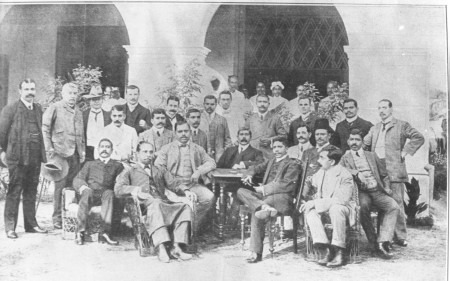
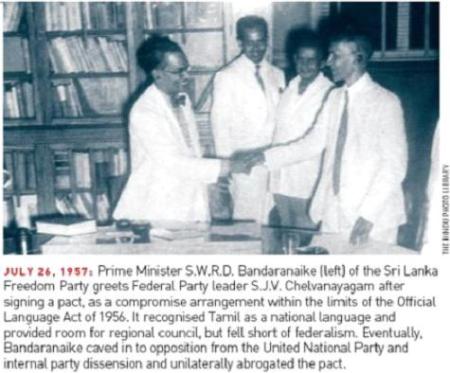
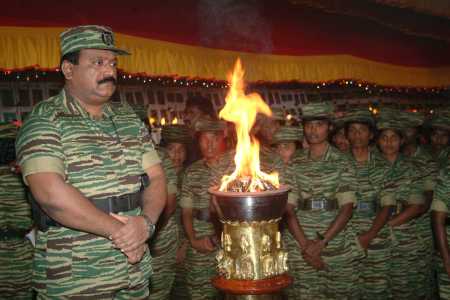
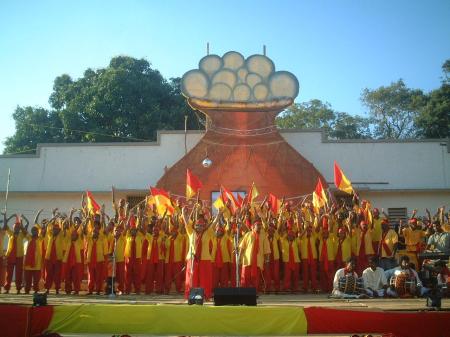
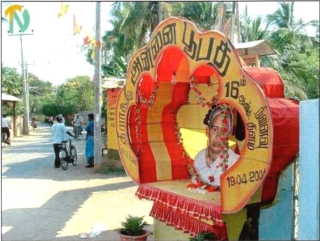
You must be logged in to post a comment.